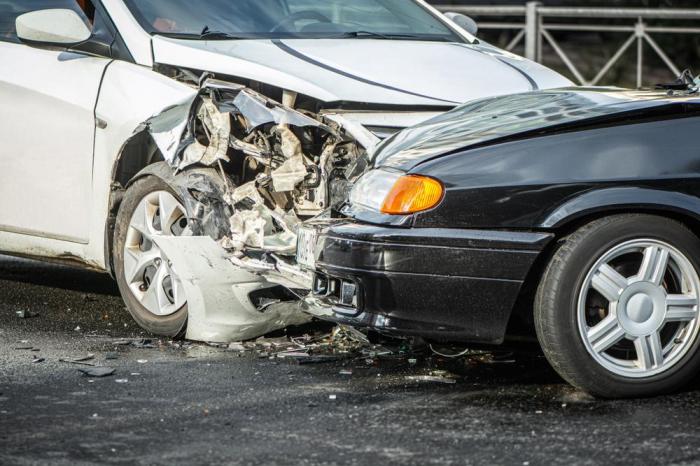Head on collisions are deadly at high speeds – Head-on collisions are deadly at high speeds. As vehicles accelerate, the force of impact increases exponentially, resulting in severe physical consequences for occupants. This article delves into the dangers of high-speed collisions, exploring the impact of vehicle mass, design features, and safety measures in mitigating these risks.
The correlation between vehicle mass and collision severity is undeniable. Heavier vehicles provide greater protection in head-on crashes due to their increased momentum and ability to absorb impact forces.
Dangers of High-Speed Collisions

Head-on collisions are among the most catastrophic events on the road, with a significantly increased risk of severe injury or death. The consequences of such crashes are particularly dire when vehicles are traveling at high speeds.
Exponential Increase in Impact Force
As a vehicle’s speed increases, the impact force experienced in a collision rises exponentially. This is because the kinetic energy of a moving vehicle is proportional to the square of its speed. Doubling the speed, for instance, quadruples the impact force.
Severe Physical Consequences
The high impact forces generated in high-speed collisions can result in a range of severe physical consequences, including:
- Traumatic brain injuries (TBIs)
- Spinal cord injuries
- Broken bones
- Internal organ damage
- Ejection from the vehicle
Impact of Vehicle Mass

The mass of a vehicle plays a crucial role in the severity of a head-on collision. Heavier vehicles generally provide greater protection to their occupants due to their increased inertia.
Correlation between Mass and Collision Severity
Data from the National Highway Traffic Safety Administration (NHTSA) indicates a strong correlation between vehicle mass and collision severity. In head-on collisions involving vehicles of different weights, the occupants of the heavier vehicle are more likely to sustain less severe injuries.
Greater Protection in Heavier Vehicles
The greater mass of heavier vehicles allows them to better withstand the impact forces generated in a collision. This is because the heavier vehicle has more momentum, which reduces the amount of deceleration experienced by its occupants.
Role of Vehicle Design

Vehicle design features can significantly influence occupant safety in head-on collisions. Several key features contribute to mitigating the impact forces and reducing the risk of injury.
Crumple Zones
Crumple zones are designed to absorb impact energy by deforming upon collision. They are typically located at the front and rear of a vehicle and are made of materials that collapse in a controlled manner, reducing the force transferred to the passenger compartment.
Airbags
Airbags are inflatable devices that deploy during a collision to provide additional cushioning and support for occupants. They help to prevent contact with hard surfaces and reduce the risk of head and chest injuries.
Safety Measures for High-Speed Driving: Head On Collisions Are Deadly At High Speeds
While it is always advisable to drive at safe speeds, there are additional measures that can be taken to reduce the risk of head-on collisions and mitigate their consequences.
Defensive Driving Techniques, Head on collisions are deadly at high speeds
Defensive driving techniques, such as maintaining a safe following distance and anticipating potential hazards, can help drivers avoid or minimize the impact of head-on collisions.
Adherence to Speed Limits
Adhering to posted speed limits is crucial for reducing the severity of head-on collisions. The higher the speed, the greater the impact force and the more severe the potential injuries.
FAQ Overview
What is the primary factor contributing to the severity of head-on collisions?
Speed is the primary factor, as the force of impact increases exponentially with rising speeds.
How do heavier vehicles enhance safety in head-on collisions?
Heavier vehicles have greater momentum and can absorb more impact forces, providing increased protection for occupants.